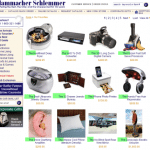Marketing continues to change for the health and wellness industry as new ways to engage with members and potential members emerge and existing methods change.
Here are four marketing trends to watch in 2019:
1. What comes after Facebook?
It’s one thing for people to know that Facebook shows you ads based on your interests. But when it was revealed in late 2018 that Facebook let vendors read your direct messages, it felt completely different for many people. Throw in a healthy dose of political and cultural vitriol cluttering up far too many newsfeeds and you have a perfect storm that is driving consumers away from Facebook. That’s on top of the fact that the number of adult users in their 20s and early 30s continues to drop.
Even Facebook acknowledges that U.S. usage is down. Is it dramatically affecting advertising ROI? Not yet, but it will — probably not this year, but it almost certainly will in 2020 and beyond.
Another killer marketing platform will emerge. It won’t be Snapchat, Instagram or LinkedIn, but it will be something.
Until then, I tell every health and wellness business owner I talk to: Refuse to be the guinea pig. You don’t need to spend time and money jumping on every bandwagon. Let other consumer-facing businesses do that, then learn from their mistakes and successes.
Meanwhile, fix your business page posts if no one is sharing or commenting. Split your Facebook ad strategy between top of funnel and bottom of funnel campaigns. Dial in your audience targeting, and strike a balance between quick-hit image ads and higher-impact video ads that really draw prospects in.
2. Local search: You must play to win.
Local search used to be all about directory citations and SEO gamesmanship — stuffing footers with zips of local communities, for example.
Now, what matters most is Google reviews, Facebook, NextDoor, Yelp! recommendations, and making the most of Google My Business profiles, posts and Q&A.
Tailor your website content to current technical and onsite SEO best practices, embrace Facebook Messenger, throw in website chat and push notifications, enable Google Ads message extensions and you have a soup-to-nuts marketing strategy tailored to what actually works in 2019.
3. Embrace your customer’s journey.
Health clubs need to tap into their customer’s journey — their life experience with health, wellness, weight, stress, disappointment and achievement.
Everyone wants to win over the inactive consumer, but you don’t do that with trendy fitness classes and smoothies and child care. You do it by overcoming their belief that they have to get fit before they can even think about joining a health club. You do it by overcoming their deep fear of feeling like an idiot, having a heart attack on a treadmill or being laughed at by other people. Yet, judging from the advertising out there, too many health club owners are still just shilling club features and facilities.
4. Face-to-face interaction.
The lure of digital marketing distracts far too many health and wellness owners from capitalizing on their strongest competitive advantage: a brick and mortar location staffed with real people who give a damn. You don’t have to pick either/or. The smart play is a balanced marketing strategy that integrates online marketing with offline, reallife lead generation experiences at your own place and in collaboration with like-minded local businesses.
This article appeared in Club Industry’s February 2019 special edition, Club Industry: Trends That Will Affect The Fitness Industry in 2019.



